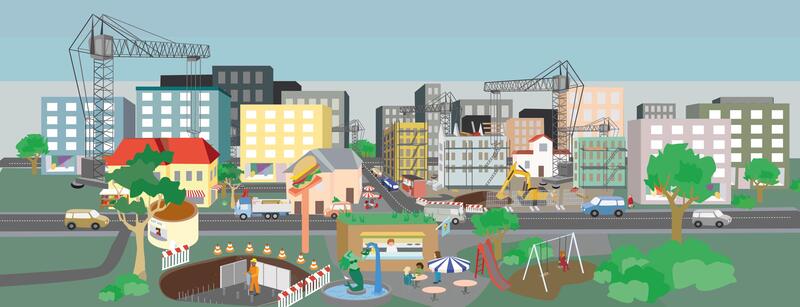Developing construction logistic solution for urban environments
When the current urbanization trend puts pressure on city development, there is a need to manage transport to and from a construction site as well as materials handling on-site. One way of doing this is by employing construction logistics setup i.e. consolidation terminal, checkpoints or a combination of both. However, how to develop a logistic setup is somewhat unclear.

Mats Janné, Linköping University, Photo: Thor Balkhed
Mats Janné, Linköping University, from the MIMIC project took in his dissertation Construction Logistics in a City Development Setting a closer look on how to develop construction logistics setups.
When cities become denser, problems inevitably arise in the vicinity of construction sites. Large amounts of material must be transported to the site on existing roads and zones for unloading and safety must be established, which can cause a lot of disturbance to the surrounding urban environment. This has led to an increasing need for good logistics management through so-called construction logistics setups.
“The introduction of construction logistics setups affects many different stakeholders in a construction project and also the relationships between them”, said Mats Janné.
Construction logistics setups (CLS) are introduced to manage three main challenges; to handle transport to and from construction projects, to handle logistics at the construction sites and to coordinate relations between the construction project's stakeholders.
The development of construction logistics setups is often based on previous solutions as there are currently no guidelines for how to develop and implement the setups.
"In my dissertation, I want to present a proposal of a framework for how to develop construction logistics setups and thus avoid ad hoc solutions", said Mats Janné.
“Developing a construction logistics setup has to start by first considering what the context and scope of the construction project is and how this will affect what needs to be managed from a logistics point-of-view”, Mats Janné continued.
However, being too contextually bound can lead to an overfitting of the setup, meaning that the setup will be too dependent on the projects it is going to serve. As such, Mats Janné suggests that the construction logistics service providers and initiators of CLSs need to consider how to balance the adaption of the setup to the project and the longevity of the CLS to be able to create a setup that is applicable to multiple projects over a longer time-period.

MIMIC – Aiming for sustainble construction logistics

